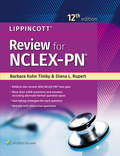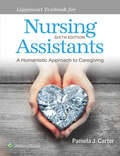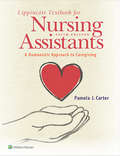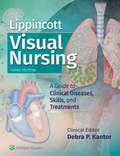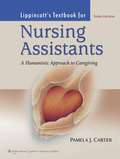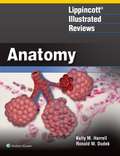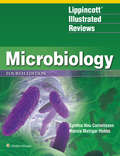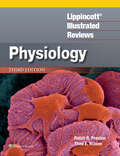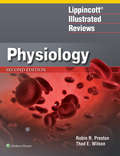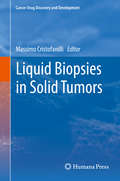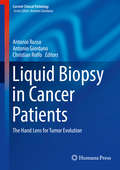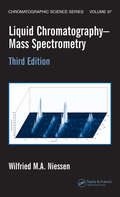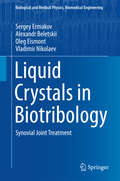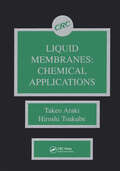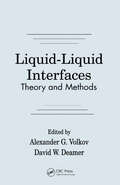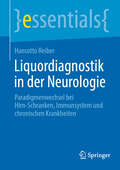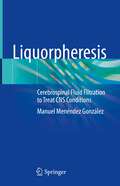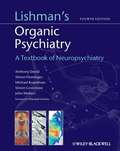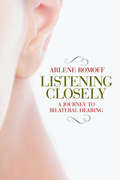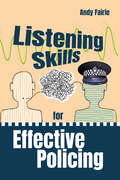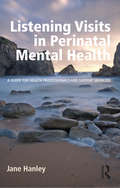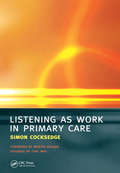- Table View
- List View
Lippincott Review for NCLEX-PN
by Barbara K. Timby Diana RupertLippincott Review for NCLEX-PN , 12E is designed to help pre-licensure nursing students in practical and vocational nursing programs prepare to take the licensing examination. More than 2,000 questions span all areas of nursing practice. Seventeen specialty tests contain questions across all the Client Need categories of the NCLEX-PN. A two-part Comprehensive Examination contains 261 items-- more than the maximum of 205 questions asked on the NCLEX-PN—to provide an outlet for comprehensive review and test practice. Every test section concludes with a review of Correct Answers, Rationales, and Test Taking Strategies. A detailed section of Frequently Asked Questions provides details about the design and process of the NCLEX-PN, as well as tips for students on how to prepare. Questions fully align with the National Council of State Boards of Nursing (NCSBN) 2020 PN test plan and include the use of all the types of alternate-format questions found on the licensing examination. An accompanying electronic site provides book purchasers an opportunity to practice the same questions in an electronic format and gives them access to a 7-day free trial of the PassPoint PN product.
Lippincott Textbook for Nursing Assistants: A Humanistic Approach to Caregiving
by Pamela J. CarterCurrent, comprehensive, and written in a conversational, easy-to-read style, Lippincott Textbook for Nursing Assistants: A Humanistic Approach to Caregiving, 6th Edition, makes essential skills approachable and prepares students to deliver confident, compassionate care throughout their healthcare careers. This updated, streamlined 6th edition distills the must-know information students need for success as nursing assistants with a human-centered perspective, and guides students through the clinical decision-making process behind safe, effective clinical outcomes across today’s healthcare landscape.
Lippincott Textbook for Nursing Assistants: A Humanistic Approach to Caregiving (Point (lippincott Williams And Wilkins) Ser.)
by Pamela CarterPublisher's Note: Products purchased from 3rd Party sellers are not guaranteed by the Publisher for quality, authenticity, or access to any online entitlements included with the product. Lippincott Textbook for Nursing Assistants: A Humanistic Approach to Caregiving, 5th Edition Pamela J. Carter, RN, BSN, MEd, CNOR Deliver compassionate, competent care in any healthcare setting. Written in a conversational, easy-to-read style and rich with dynamic images and illustrations, this comprehensive text helps you master the technical, communication, and critical thinking skills essential to your success as a nursing assistant. Up-to-date coverage reflects the latest clinical approaches, and a practical format guides you through the decision-making process behind safe, fulfilling patient outcomes. NEW! Taking It to the Next Level: Advanced Skills calls-out skills in the text that may require additional training as you advance your career and are further explained in Lippincott Acute Care Skills for Advanced Nursing Assistants eBook. Updated content keeps you current with the latest state-specific guidelines and 2016 NNAAP skill revisions. Guidelines (“What You Do/Why You Do It”) boxes detail the how and why behind key nursing assistant actions. Tell the Nurse! Notes summarize observations that you need to report to the nurse. Stop and Think! Scenarios offer practice for solving the types of complex, real-world nursing situations you’ll encounter on the job. Helping Hands and a Caring Heart: Focus on Humanistic Health Care boxes help you empathize with those in your care and meet patients’ and residents’ emotional and spiritual needs, as well as their physical needs. Empowering online learning tools reinforce key terms and content with engaging Watch and Learn/Listen and Learn Audio and Video Clips and an interactive audio glossary. Procedures highlight important privacy, safety, infection control, and comfort concepts and guide you step by step through essential nursing assistant tasks. Chapter-ending summary sections enhance your retention and understanding at a glance. What Did You Learn? multiple-choice and matching exercises with answers help you assess your understanding of essential information and prepare for state certification exams. Nursing Assistants Make A Difference! sections highlight your critical role on the healthcare team with first-person accounts of the nursing assistant’s positive impact on the lives of others. Empowering online learning tools reinforce key terms and content with engaging Watch and Learn/Listen and Learn Audio and Video Clips and an interactive audio glossary is available at thePoint.lww.com/Carter5e.
Lippincott Visual Nursing: A Guide to Clinical Diseases, Skills, and Treatments
by Lippincott Williams WilkinsFor an image-rich guide to the clinical concepts and on-the-unit skills needed to treat the major common diseases, look no further than the fully updated Lippincott Visual Nursing, 3rd Edition. Using clear, concise definitions backed by abundant images, this vital text explains disease pathophysiology, with expert guidance on anatomy, symptoms, assessment skills, and hands-on patient care. Ideal for students, new nurses, and experienced nurses needing a review, this is a must-have guide to providing appropriate, effective patient care. Follow these real-world visuals and top-notch directions for treating common diseases. . . NEW enhanced eBook included with purchase NEW flow charts showing clinical manifestations and leading to diagnosis, showing improvement or decline NEWformat—tests, procedures, and treatments for each system now appearing before discussion of diseases NEW diagnoses added for diseases throughout the text Dozens of colorful illustrations, photos, waveforms, and diagrams that clearly demonstrate concepts and descriptions Step-by-step guidance on basic assessment skills, including: gathering subjective and objective data, questions to ask, documentation, and more Step-by-step assessment and treatment instructions that enhance your nursing skills and confidence Chapters addressing individual body systems: respiratory, cardiovascular, neurologic, gastrointestinal, musculoskeletal, renal and urologic, hematologic and immunologic, endocrine, integumentary, and male and female reproductive care Each body system chapter addresses: Major diseases affecting that system Normal anatomy—descriptions and images Pathophysiology of common health problems Lab tests and imaging studies Disease development Signs, symptoms, stages, and prevention Treatments—drug therapies, procedures, and surgery Nursing considerations—assessing patient decision-making ability, monitoring for complications, checking vital signs, post-operative care, and more Comparative charts that list diseases, their causes, persons at risk, symptoms, assessment findings, diagnoses, treatments, interventions Ideal study and review text for visual learners—colorful images that support other nursing texts, making it easy to learn and retain information Summarizes the major diseases and nursing considerations and interventions clearly and concisely Chapter features that include: Picturing Patho—flowcharts that show the effects of complex diseases Hands On—photographs that illustrate nursing procedures and treatments Lesson Plans—summaries of vital information for patient and family education Your book purchase includes a complimentary download of the enhanced eBook for iOS, Android, PC & Mac. Take advantage of these practical features that will improve your eBook experience: The ability to download the eBook on multiple devices at one time — providing a seamless reading experience online or offline Powerful search tools and smart navigation cross-links that allow you to search within this book, or across your entire library of VitalSource eBooks Multiple viewing options that enable you to scale images and text to any size without losing page clarity as well as responsive design The ability to highlight text and add notes with one click
Lippincott's Textbook for Nursing Assistants: A Humanistic Approach to Caregiving Third Edition
by Pamela J. CarterCarter (nursing assisting, Davis Applied Technology College) offers a textbook to help nursing assistant students in any setting develop their skills and understand a humanistic approach to caregiving. The text covers healthcare background, safety, basic daily care, death and dying, body structure and function, special and acute care, and home health care. This edition has updated information on new infection control guidelines, family involvement in care planning, the Joint Commission and Nursing Home Surveys, ergonomics and workplace violence, post-traumatic stress disorder, substance abuse, and updated procedures, as well as two new chapters on comfort and rest and rehabilitation and restorative care and new personal stories by nursing assistants. The CD-ROM contains video clips, an audio glossary, and accounts of nursing assistants (also online). The text also includes an iPhone application.
Lippincott® Illustrated Reviews: Anatomy (Lippincott Illustrated Reviews Series)
by Kelly M. Harrell Ronald W. DudekPublisher's Note: Products purchased from 3rd Party sellers are not guaranteed by the Publisher for quality, authenticity, or access to any online entitlements included with the product. Lippincott® Illustrated Reviews: Anatomy equips students with a clear, cohesive understanding of clinical anatomy, accentuated with embryology and histology content to ensure their readiness for clinical challenges. The popular Lippincott® Illustrated Reviews series format integrates approachable, lecture-style outlines with detailed full-color illustrations and photographs to clarify complex information and help students visualize key anatomic structures. Accompanying clinical examples make content even more accessible, and board-style review questions build test-taking confidence to help students excel on their exams
Lippincott® Illustrated Reviews: Microbiology (Lippincott Illustrated Reviews Series)
by Cynthia N. Cornelissen Marcia Metzgar HobbsMastering essential microbiology concepts is easier with this vividly illustrated review resource. Part of the popular Lippincott® Illustrated Reviews series, this proven approach uses clear, concise writing and hundreds of dynamic illustrations to take students inside various microorganisms and ensure success on board exams.
Lippincott® Illustrated Reviews: Physiology
by Robin R. Preston Thad E. WilsonSelected as a Doody's Core Title for 2022 and 2023! Enhanced with new Clinical Cases, new practice questions, and additional animations, Lippincott ® Illustrated Reviews: Physiology, 3rd Edition, brings physiology clearly into focus, detailing who we are, how we live, and, ultimately, how we die. By first identifying organ function and then showing how cells and tissues are designed to fulfill that function, this engaging resource decodes physiology like no other text or review book. Tailored for ease of use and fast content absorption, the book’s straightforward outline format, visionary artwork, clinical applications, and unit review questions help students master the most essential concepts in physiology, making it perfect for classroom learning and preparation for course and board exams.
Lippincott® Illustrated Reviews: Physiology (Lippincott Illustrated Reviews Series)
by Robin R. Preston Thad E. WilsonPublisher's Note: Products purchased from 3rd Party sellers are not guaranteed by the Publisher for quality, authenticity, or access to any online entitlements included with the product. Enhanced by a new chapter, new illustrations, and new Q&As, LIppincott® Illustrated Reviews: Physiology, Second Edition brings physiology clearly into focus, telling the story of who we are; how we live; and, ultimately, how we die. By first identifying organ function and then showing how cells and tissues are designed to fulfill that function, this resource decodes physiology like no other text or review book. Tailored for ease of use and fast content absorption, the book’s outline format, visionary artwork, clinical applications, and unit review questions help students master the most essential concepts in physiology, making it perfect for classroom learning and test and boards preparation.
Lipstick in Afghanistan
by Roberta GatelyRoberta Gately’s lyrical and authentic debut novel—inspired by her own experiences as a nurse in third world war zones—is one woman’s moving story of offering help and finding hope in the last place she expected. Gripped by haunting magazine images of starving refugees, Elsa has dreamed of becoming a nurse since she was a teenager. Of leaving her humble working-class Boston neighborhood to help people whose lives are far more difficult than her own. No one in her family has ever escaped poverty, but Elsa has a secret weapon: a tube of lipstick she found in her older sister’s bureau. Wearing it never fails to raise her spirits and cement her determination. With lipstick on, she can do anything—even travel alone to war-torn Afghanistan in the wake of 9/11. But violent nights as an ER nurse in South Boston could not prepare Elsa for the devastation she witnesses at the small medical clinic she runs in Bamiyan. As she struggles to prove herself to the Afghan doctors and local villagers, she begins a forbidden romance with her only confidant, a charming Special Forces soldier. Then, a tube of lipstick she finds in the aftermath of a tragic bus bombing leads her to another life-changing friendship. In her neighbor Parween, Elsa finds a kindred spirit, fiery and generous. Together, the two women risk their lives to save friends and family from the worst excesses of the Taliban. But when the war waging around them threatens their own survival, Elsa discovers her only hope is to unveil the warrior within. Roberta Gately’s raw, intimate novel is an unforgettable tribute to the power of friendship and a poignant reminder of the tragic cost of war.
Liquid Biopsies in Solid Tumors
by Massimo CristofanilliThis volume, with chapters written by experts in the field of cancerous tumors, details the key factors associated with liquid biopsies in solid tumors: blood-based diagnostics; circulating tumor cells; enumeration and molecular analysis (association with breast cancer); epithelialmesenchymal transition; detection and monitoring; circulating-free tumor DNA; CTCs and ctDNA; and the exosome. The field of blood-based diagnostics is rapidly evolving demonstrating the possibility of real-time molecular analysis of cancer cells and their phenotype and genotype. Circulating Tumor Cell (CTCs) have demonstrated prognostic and predictive value in advanced cancer and represents a source of tumor cells for transcriptome and genomic analysis. Most recently, the detection of genomic abnormalities in the peripheral blood by sensitive and selective PCR methods (liquid biopsy) opened to the option of a comprehensive blood-based tumor analysis. Similar information can be obtained by analysis of exosome, a natural packaging and messaging system being explored in advanced malignancies. The final frontier is the evaluation of immune cells determinant of innate and adaptive immunity.
Liquid Biopsies: Methods and Protocols (Methods in Molecular Biology #2695)
by Tao Huang Jialiang Yang Geng TianThis book analyzes liquid biopsy applications in cancer and other diseases. Chapters guide readers through the latest technologies and analysis methods for liquid biopsy,liquid biopsy in cancer, role of liquid biopsies in rheumatoid arthriti, cell-free circulating DNA profiling in patients with skin diseases, circulating non-coding RNAs, and exomes. Written in the format of the highly successful Methods in Molecular Biology series, each chapter includes an introduction to the topic, lists necessary materials and reagents, includes tips on troubleshooting and known pitfalls, and step-by-step, readily reproducible protocols. Authoritative and cutting-edge, Liquid Biopsies: Methods and Protocols aims to attract more researchers and clinicians to study the diagnosis, immunotherapy, and prognosis of cancer and other diseases with liquid biopsy analysis.
Liquid Biopsy in Cancer Patients
by Antonio Giordano Antonio Russo Christian RolfoThis text is designed to provide readers with a useful and comprehensive resource and state-of-the-art overview about the new, growing and fast-expanding field of "liquid biopsy" for the management of cancer patients. The liquid biopsy represents an important turning point in oncology since it provides a tool for a serial monitoring of disease. Liquid biopsy is our "hand lens" to follow molecular changes that characterize tumor development and progression. The book provide a unique and valuable resource on the clinical relevance of liquid biopsy as well as on the technical aspects of liquid biopsy analysis. All invited authors are recognized experts in their field. Liquid Biopsy in Cancer Patients: The Hand Lens for Tumor Evolution is targeted to resident and fellows physicians, medical oncologists, molecular biologists and biotechnologists.
Liquid Chromatography-Mass Spectrometry (Chromatographic Science Series)
by Wilfried M.A. NiessenA constructive evaluation of the most significant developments in liquid chromatography-mass spectrometry (LC-MS) and its uses for quantitative bioanalysis and characterization for a diverse range of disciplines, Liquid Chromatography-Mass Spectrometry, Third Edition offers a well-rounded coverage of the latest technological developments and
Liquid Crystals in Biotribology
by Sergey Ermakov Alexandr Beletskii Oleg Eismont Vladimir NikolaevThis book summarizes the theoretical and experimental studies confirming the concept of the liquid-crystalline nature of boundary lubrication in synovial joints. It is shown that cholesteric liquid crystals in the synovial liquid play a significant role in the mechanism of intra-articular friction reduction. The results of structural, rheological and tribological research of the creation of artificial synovial liquids containing cholesteric liquid crystals in natural synovial liquids are described. These liquid crystals reproduce the lubrication properties of natural synovia and provide a high chondroprotective efficiency. They were tested in osteoarthritis models and in clinical practice.
Liquid Membranes: Chemical Applications
by Takeo Araki Hiroshi TsukubeThis interesting work extensively describes newer applications of liquid membrane systems which contain molecular and/or ion recognizing carrier compounds and the related characteristic membrane materials. This volume focuses on the current knowledge about chemistry, biology and related technology of liquid membranes. It reviews the most recent advances in design and characteristics of synthetic liquid membrane transport. Additionally, this fascinating reference discusses up-to-date topics in the analytical and separation science, plus biomimetic membrane technology. Because this book is presented in a compact, understandable format, readers can start from biological cell membranes, then net aspects of host-guest chemistry for effective recognition of ions and molecules, followed by its application for artificial sensors-such as neuro-systems, functionalized new detergents, mechanochemical systems, and separation chemistry. This publication is ideal for graduate-level students and will stimulate university and industry researchers.
Liquid-Liquid InterfacesTheory and Methods
by Alexander G. Volkov David W. DeamerUpdate your knowledge of the chemical, biological, and physical properties of liquid-liquid interfaces with Liquid-Liquid Interfaces: Theory and Methods. This valuable reference presents a broadly based account of current research in liquid-liquid interfaces and is ideal for researchers, teachers, and students. Internationally recognized investigators of electrochemical, biological, and photochemical effects in interfacial phenomena share their own research results and extensively review the results of others working in their area. Because of its unusually wide breadth, this book has something for everyone interested in liquid-liquid interfaces. Topics include interfacial and phase transfer catalysis, electrochemistry and colloidal chemistry, ion and electron transport processes, molecular dynamics, electroanalysis, liquid membranes, emulsions, pharmacology, and artificial photosynthesis. Enlightening discussions explore biotechnological applications, such as drug delivery, separation and purification of nuclear waste, catalysis, mineral extraction processes, and the manufacturing of biosensors and ion-selective electrodes.Liquid-Liquid Interfaces: Theory and Methods is a well-written, informative, one-stop resource that will save you time and energy in your search for the latest information on liquid-liquid interfaces.
Liquordiagnostik in der Neurologie: Paradigmenwechsel bei Hirn-Schranken, Immunsystem und chronischen Krankheiten (essentials)
by Hansotto ReiberDieses essential erklärt die naturwissenschaftlichen Grundlagen für die wissensbasierte Interpretation medizinischer Labordaten. Selbstorganisation biologischer Struktur, nichtlineare Dynamik komplexer Systeme und immunologische Netzwerktheorien erlauben es, Pathomechanismen und Diagnostik, vor allem chronischer Krankheiten, als Ausdruck einer phänotypischen Biologie zu beschreiben und Konzepte für kausale Therapien zu entwickeln.Das Buch zeigt, wie in der Liquordiagnostik mit einem alle Labordaten integrierenden Befundbericht krankheitstypische Muster zur Differentialdiagnose von bakteriellen, viralen, Parasiten-bedingten, onkologischen, chronisch entzündlichen, autoimmunologischen und psychiatrischen Krankheiten erkennbar werden. Als Tutorial steht eine App zur Verfügung.
Liquorpheresis: Cerebrospinal Fluid Filtration to Treat CNS Conditions
by Manuel Menéndez GonzálezThis book provides an overview of emerging CSF management systems that filter or clear cerebrospinal fluid (CSF) as a therapeutic approach for several CNS conditions. While the term "liquorpheresis" most accurately refers to extracorporeal procedures that filter CSF (similar to plasmapheresis), this book covers any method based on devices that -either alone or in combination with drugs- can clear CSF or enhance its turnover, which in turn dilutes toxins.The book begins with an overview of CSF anatomy and physiology, followed by a discussion of the role of CSF clearance and flow dysfunction in various CNS conditions. The next section describes the different CSF management systems and procedures that are currently available or under development. The book then reviews the potential applications of these systems for treating subarachnoid hemorrhage, CNS infections, meningeal carcinomatosis, autoimmune encephalitis, polyradiculomyelitis, and neurodegenerative diseases. Finally, a chapter discusses future advances in liquorpheresis systems and applications. This book is intended for clinicians, neuro-researchers, academics, and students who are interested in the development and application of CSF management systems. It is also relevant to the medical device industry, particularly those that develop apheresis and CSF management devices, and the drug-delivery industry.
Lisa Riley's Honesty Diet: Change your life in just 8 days
by Lisa RileyStart your weight-loss journey with Lisa Riley's simple, honest and fuss-free diet plan that will help you cultivate the right mindset for a truly rewarding wellness journey'Officially the cheapest way to lose weight' PRIMA________You can feel and look great the simple way with Lisa Riley as she lets us in on the secrets behind her incredible 12-stone weight loss.After years of wearing size-30 clothes and convincing herself she was 'fat but happy', Lisa Riley finally took control of her body and shed a remarkable 12 stone.Healthier, infinitely happier and proud of her slim new figure, Lisa now reveals how she lost all that weight and - more importantly - kept it off. Lisa knows that if she can do it, anyone can.The very first thing she had to tackle was her thinking, and in this book you'll discover the strategies that helped her get honest with herself and stay on track. Inside Lisa shares:· A simple 8-day eating plan to kick things off· Fast, easy, delicious low-carb recipes· An 'honesty diary' section for keeping track of progress and motivating yourself· Tips for staying healthy when on-the-go and eating out· Everyday fitness ideas that anyone can doWith Lisa's help, you can put the fibs and excuses behind you, kick those bad habits and achieve the body and health you've always dreamed of.________What readers say about Lisa Riley's Honesty Diet . . .'I loved the food, the simplicity of the meals and the plan . . . It has changed my outlook on eating and losing weight, my portion size and my body size' Vivien'I have a dress which I last wore 3 years ago . . . today I tried the same outfit and whizzed the zip up and down. It was comfortable and a little loose! I'm with Lisa every step of my journey' Elaine'I learnt that I am a lot stronger and more determined than I thought I was and I DO have the willpower! I LOVE IT!' Louise
Lishman's Organic Psychiatry
by Marshal Folstein Simon Fleminger Michael Kopelman Anthony David Simon Lovestone John Mellers"For three decades psychiatrists have turned to Lishman's Organic Psychiatry as the standard neuropsychiatry reference. It stood as the last great single author reference text in medicine, a combination of meticulous, exhaustive research conveyed in a beautifully clear style. Now the mantle has been passed to a group of five distinguished authors and it is to their considerable credit that the attributes which made Organic Psychiatry such a distinctive voice remain. The fourth Edition of Lishman's Organic Psychiatry is a rich blend of detailed clinical inquiry and up to date neuroscience. It should be on every psychiatrist;s book shelf."--Anthony Feinstein, MPhil, PhD., FRCP, Professor, Department of Psychiatry, University of Toronto, CanadaOver the past 30 years, thousands of physicians have depended on Lishman's Organic Psychiatry. Its authoritative and reliable clinical guidance was - and still is - beyond compare.The new edition of this classic textbook has now been extensively revised by a team of five authors, yet it follows the tradition of the original single-authored book. It continues to provide a comprehensive review of the cognitive, emotional and behavioural consequences of cerebral disorders and their manifestations in clinical practice. Enabling clinicians to formulate incisive diagnoses and appropriate treatment strategies, Lishman's Organic Psychiatry is an invaluable source of information for practising psychiatrists, neurologists and trainees.This new edition:covers recent theoretical and clinical developments, with expanded sections on neuropsychology and neuroimagingincludes a new chapter on sleep disorders whilst the chapters on Alzheimer's disease and related dementias, Epilepsy, Movement disorders and Traumatic brain injury have been extensively revised reflecting the greatly improved understanding of their underlying pathophysiologiesshowcases the huge advances in brain imaging and important discoveries in the fields of molecular biology and molecular geneticshas been enhanced with the inclusion of more tables and illustrations to aid clinical assessmentincorporates important diagnostic tools such as magnetic resonance brain images.
Listening Closely: A Journey to Bilateral Hearing
by Arlene RomoffImagine what it would be like not to hear a sound--no music, no friendly voices, no children's laughter. Arlene Romoff doesn't have to imagine how it would feel: she lived it. Although she was born with normal hearing, in her late teens it began to slip away, as if someone were lowering the volume of the world around her. Over the next twenty-five years, Arlene began a long, slow descent into deafness so profound that no hearing aid or assistive device could help. The experience was devastating.But then Arlene opted for what she considers a miracle: She got a cochlear implant. Using electrodes threaded into the cochlea, an internal computer chip, and an external computer processor, cochlear implants bypass the damaged portion of the cochlea and stimulate the auditory nerve directly, allowing sound to reach the brain. Amazingly, she could hear again.Arlene's journey, however, isn't just about the magic of technology. What she endured reveals as much about the strength of the human spirit, about the wonders of chance and fate, and about making the most of what life dishes out. For Arlene, events seemed to unfold almost as if they were a part of some elaborate plan: just when she went deaf, her insurance company began paying for the implants. And ten years later, when her old cochlear implant finally failed she received new state-of-the-art technology and underwent yet another metamorphosis--one that helped her continue to counsel others in a similar situation.LISTENING CLOSELY will give you a chance to walk in Arlene Romoff's shoes, to understand the pain of her loss and the joy of once again being able to hear the music of the world. Those suffering from hearing loss--or who have loved one who is--will find Arlene's very special journey both inspirational and informative.
Listening Skills for Effective Policing
by Andy FairieDeveloping and honing effective listening skills for trainee, new and existing police officers at all levels.Learning how to be an effective listener is one of the most vital communication skills for successful policing. Drawing on the author’s vast experience as a specialist frontline police officer, this book is informal and easy-to-understand, with a sprinkle of humour, making it highly readable and accessible. It introduces an effective, tried and tested model to guide difficult conversations and covers a range of key topics of relevance to operational policing, including issues connected with diversity and with suicide. Supported by academic research, including counselling theory, it provides real-life examples to demonstrate how the tools work in practice, and questions and exercises to encourage personal reflection.
Listening Visits in Perinatal Mental Health: A Guide for Health Professionals and Support Workers
by Jane HanleyListening Visits in Perinatal Mental Health focuses on how women and families suffering from perinatal mental illness can be supported by a wide range of practitioners. Based on the skills of attentive listening, it is designed for use by health professionals and support workers concerned with maternal mental health and the mental health of the family. This accessible guide: Covers the process and progression of perinatal mental health Discusses the types of anxiety and depression which may occur during the perinatal period Examines the impact of maternal mental illness of the infant, father and family Explores the available assessment tools, such as the EPDS Presents the theories behind the efficacy of listening and counselling skills, as well as the evidence which recommends this type of therapy Gives suggestions of alternative therapeutic approaches and further resources to explore around perinatal mental health Emphasises the importance of looking after yourself and making use of supervision and peer support. With chapters focused on listening to mothers, fathers and infants and paying attention to cultural diversity, Listening Visits in Perinatal Mental Health builds on the knowledge that many professionals working with new mothers already have about perinatal mental health. It focuses on developing the skills needed to put this knowledge into practice and includes case examples and follow-up activities throughout.
Listening as Work in Primary Care
by Simon CocksedgeThis book encourages health professionals in primary care to reflect on listening in their work with patients — the choices they make, the relationships which emerge and the limits that they put in place. It is useful for trainee doctors and to established general practitioners.
